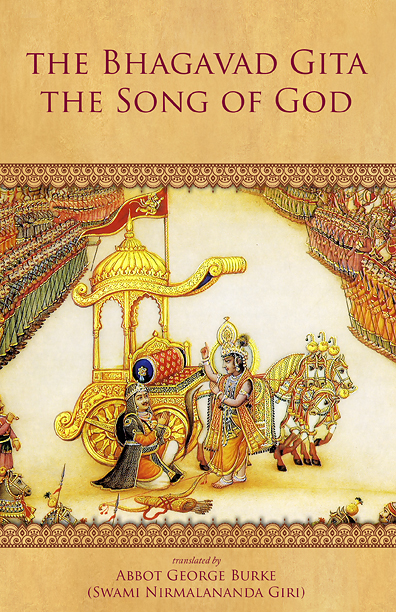
Again I shall explain to you the highest of knowledges, the best of all knowledge, having known which all the sages attained to the highest perfection. (14:1)
Resorting to this knowledge they attain identity with me. At creation they are not born, nor do they tremble at its dissolving. (14:2)
For me great Brahma is the womb, and in that do I place the seed. The origination of all beings comes from that. (14:3)
Whatever be the forms produced within all wombs, the great Brahma is their womb, and I the seed-casting Father. (14:4)
Sattwa, rajas, and tamas–these gunas born of Prakriti bind fast in the body the imperishable embodied one (the Atman-Self). (14:5)
Of these, sattwa is stainless, luminous, and health-giving; it binds by attachment to happiness and by attachment to knowledge. (14:6)
Know rajas’ nature is passion arising from thirst and attachment; it binds fast the embodied one by attachment to action. (14:7)
Know indeed that tamas is born of ignorance, deluding all embodied ones. It binds by distraction, laziness and sleep. (14:8)
Sattwa causes attachment to happiness, rajas causes attachment to action; and tamas, veiling knowledge, causes attachment to delusion. (14:9)
Sattwa prevails over rajas and tamas; and rajas prevails over sattwa and tamas; and tamas prevails over sattwa and rajas. (14:10)
When the light of knowledge shines in all the gates of the body, then it should be known that sattwa is dominant. (14:11)
Greed, activity, undertaking of actions, restlessness, and desire–these arise when rajas is dominant. (14:12)
Darkness, inertia, heedlessness and delusion–these arise when tamas is dominant. (14:13)
When the embodied one dies when sattwa is dominant, then he enters the stainless realms of the knowers of the Highest. (14:14)
Dying in rajas, he is born amid those attached to action. Dying in tamas, he is born from the wombs of the deluded. (14:15)
They say the fruit of action performed well, is sattwic and without fault; but the fruit of rajas is pain, and the fruit of tamas is ignorance. (14:16)
From sattwa arises knowledge; and from rajas arises greed; from tamas arises heedlessness, delusion and ignorance. (14:17)
Those established in sattwa go upward; the rajasic remain in the middle; the tamasic, abiding in the lowest guna, go downward. (14:18)
When the beholder sees no doer other than the gunas, and knows that which is higher than the gunas, he attains to my being. (14:19)
When an embodied being rises above these three gunas, which are the source of the body, freed from birth, death, old age and pain, he attains immortality. (14:20)
Arjuna said:
By what marks is he known who has gone beyond the gunas? What is his conduct, and how does he go beyond these three gunas? (14:21)
The Holy Lord said:
He neither detests the presence nor desires the absence of illumination or activity or delusion. (14:22)
He who sits apart, indifferent to and unmoved by the gunas, realizing: “the gunas are operating,” stands firm and is unwavering. (14:23)
The same in pain or in pleasure, self-contained, to whom a clod of earth, a stone, and gold are alike; to whom the liked and the unliked are the same, steadfast, to whom blame and praise of himself are equal, (14:24)
Indifferent in honor and dishonor, impartial toward the side of friend or enemy, renouncing all undertakings–he is said to be beyond the gunas. (14:25)
And he who serves me with the yoga of unswerving devotion, going beyond the three gunas, is fit for absorption in Brahman. (14:26)
For I am the abode of Brahman, the immortal, immutable, abode of everlasting dharma and of absolute bliss. (14:27)
Om Tat Sat
Thus in the Upanishads of the glorious Bhagavad Gita, the science of the Eternal, the scripture of Yoga, the dialogue between Sri Krishna and Arjuna, ends the fourteenth discourse entitled: The Yoga of the Division of the Three Gunas.
Read Chapter Fifteen: The Yoga of the Supreme Spirit







